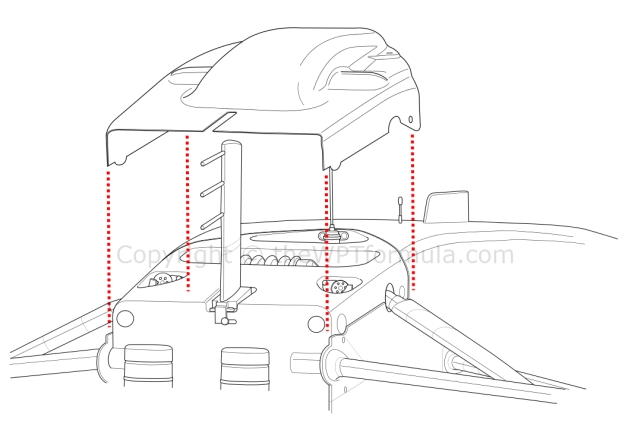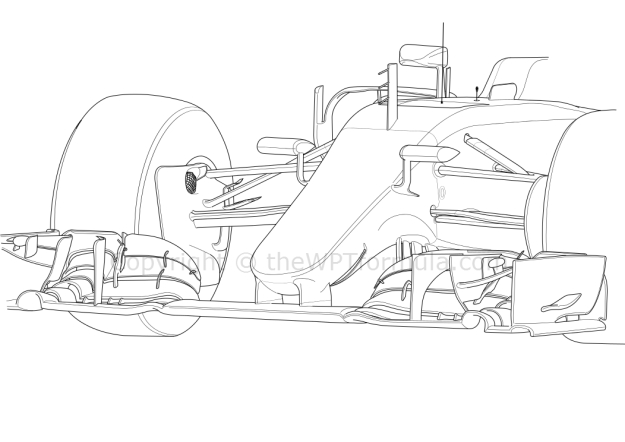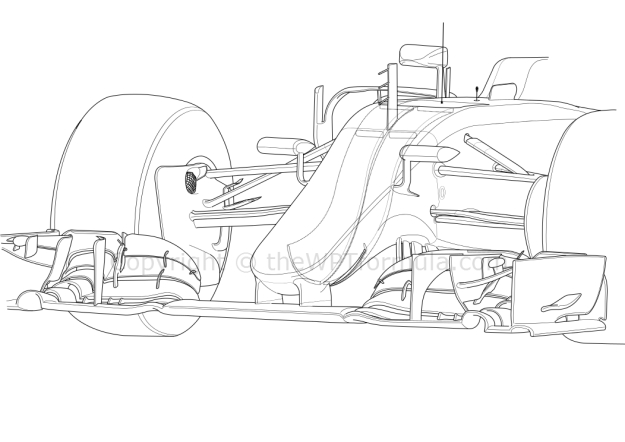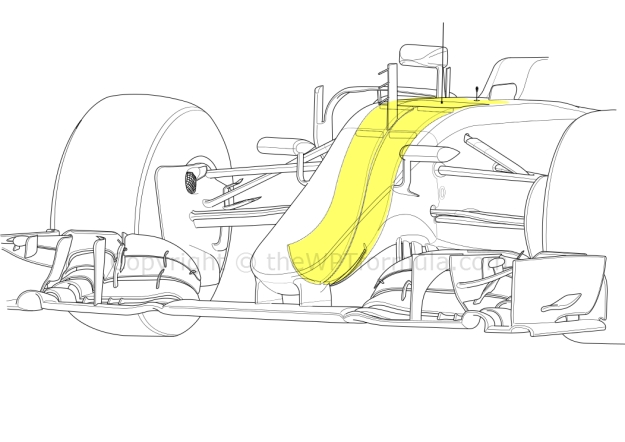One of the key design features of this year’s Mercedes W07 is the introduction of an S-duct. The S-duct was first seen in 2012, with Sauber using it as a way to manage airflow over the stepped nose. The idea was that airflow would be less likely to detach from the chassis if air was introduced behind the step. This was done by channeling airflow from underneath the car to a vent exiting backwards above the front bulkhead via an s-shaped duct in the nosebox, hence the term S-duct.
Although it is not a game-changing device on its own, it offers a way of linking multiple aerostructures together to make the car work cohesively around the front end. The steep inclination of the nose and the short, flat top section of the chassis means that, particularly in yaw, airflow can wander around a lot. The S-duct aims to control this airflow by keeping it attached to the car’s surface, which can be further exploited by the turning vanes and sidepods as it passes downstream.

Mercedes used this fairing in Brazil last year to mimic the effects of an S-duct without air flowing through it, i.e. testing the shape of the duct in otherwise normal conditionsThe idea of Mercedes running an S-duct in 2016 was first mooted in Brazil last year, where the team ran the above fairing in place of the conventional cover over the internal suspension components. The vent – which was not connected to an inlet – was wrapped over a horizontal bulge that was needed to clear the larger hydraulic heave element that was also tested at the time, something that was also carried over into 2016.
This design clearly had its drawbacks, the bulge in particular was neither pretty or efficient. As a result the W07 has lower connecting points for the pushrod arms and rockers, sinking the heave spring into the chassis and therefore making the bulge redundant. Furthermore, this has allowed the engineers to further integrate the duct into the rest of the car without compromising airflow passing over it.

Now we can clearly see the efforts Mercedes have gone to in packaging the S-duct within the tight confines of the nosebox and front bulkhead. Unlike any other S-duct in the pitlane the Mercedes vent exits much further behind the nose – the most common design features a single exit slot where the nose meets the chassis.
The W07’s plumbing also differs from the competition in that the inlet for the duct is much further forward. The inlet’s shape is such that it evades the single cross section rule, just like Force India’s ‘nostrils’ nose, in that no matter which way you cut it there does not appear to be a ‘hole’ in the Mercedes nose.

The positioning of the inlet and outlet creates an elongated ‘s’ to the duct rather than the traditionally tight plumbing. Images from the Australian GP reveal that the inlet is split, navigating airflow up two channels to a pair of nostrils bored into the front bulkhead before exiting over the chassis top behind. It is unclear whether the nostrils feed into a single, slender exit or if the division remains – above I have drawn it as two separate exits.
McLaren also have two exit vents instead of a sole large vent, so perhaps keeping the volume of airflow lower has its benefits. This may well be to do with the speed at which the air exits the duct and how that influences the airflow around it.

Above highlights how air enters and exits the duct and then over the carThe Mercedes version has a few apparent advantages over its rivals. The gradual way in which air is passed up to the top side of the car must help keep the airflow stable and less turbulent. This will also benefit the speed at which air exits over the car, which will increase the chance of potentially wandering airflow to cling to the car.
So, just like the complex bargeboards, Mercedes appear to again be a step ahead of everyone else when it comes to both the power unit and chassis design.
No comments:
Post a Comment